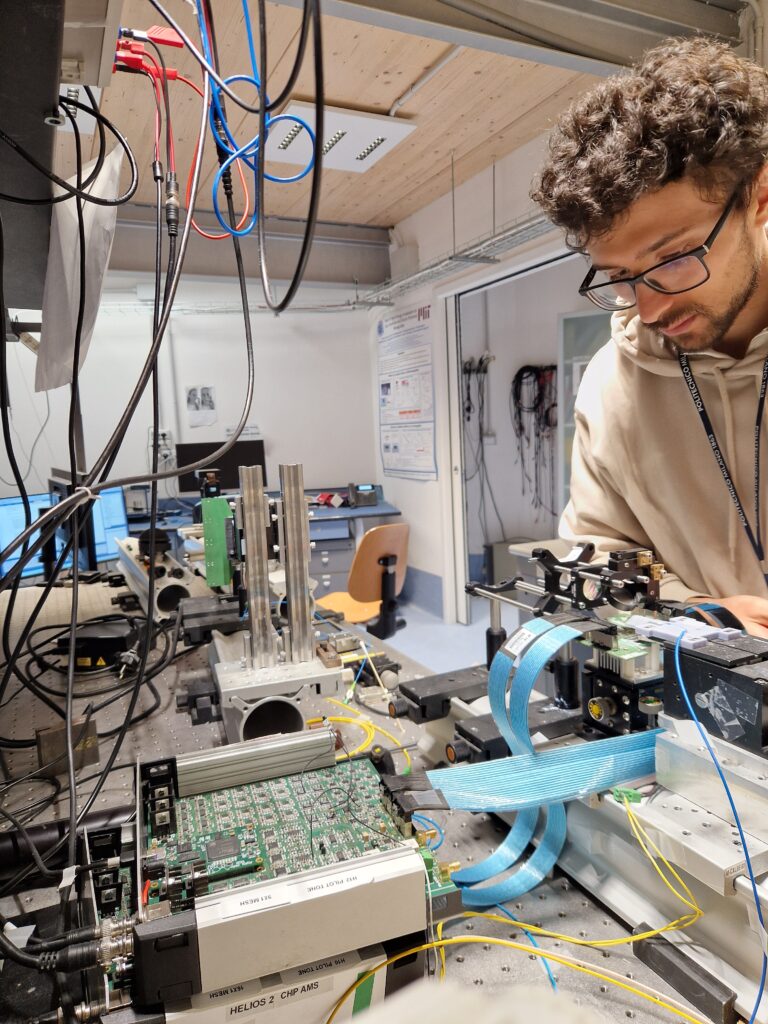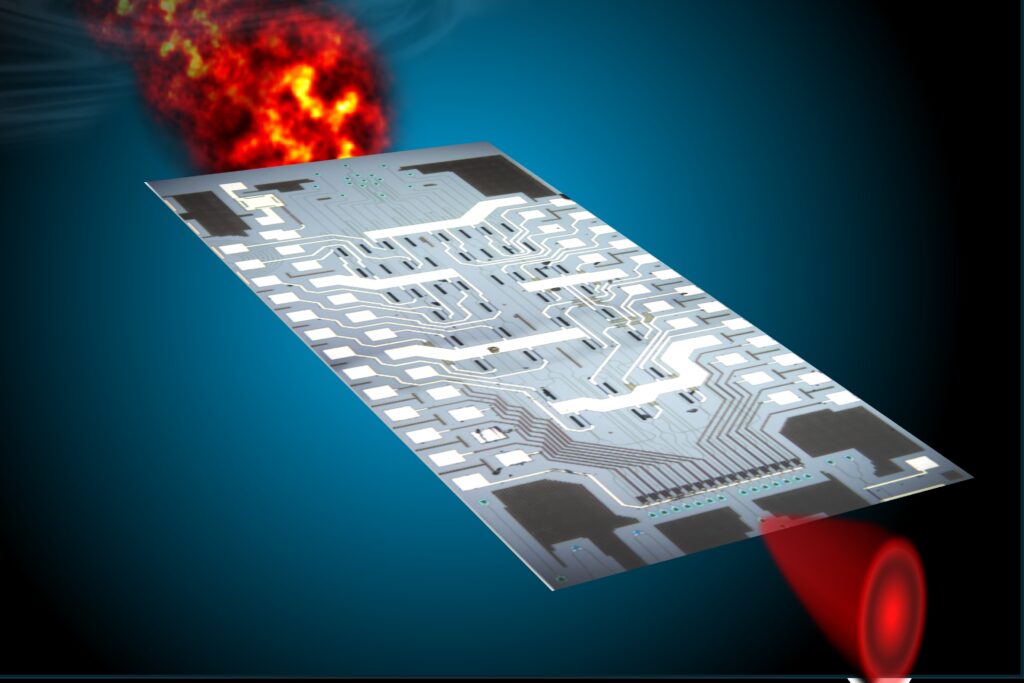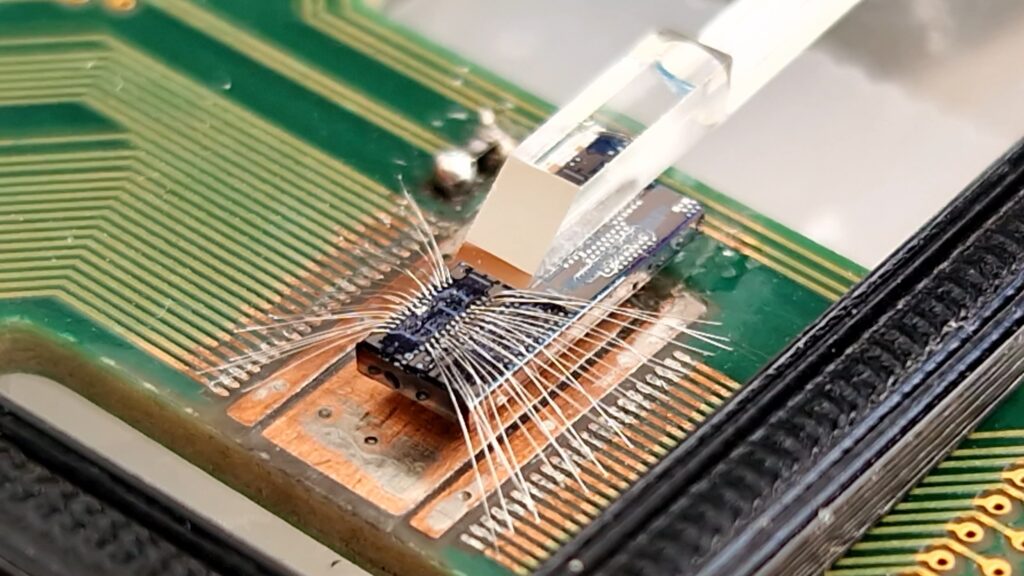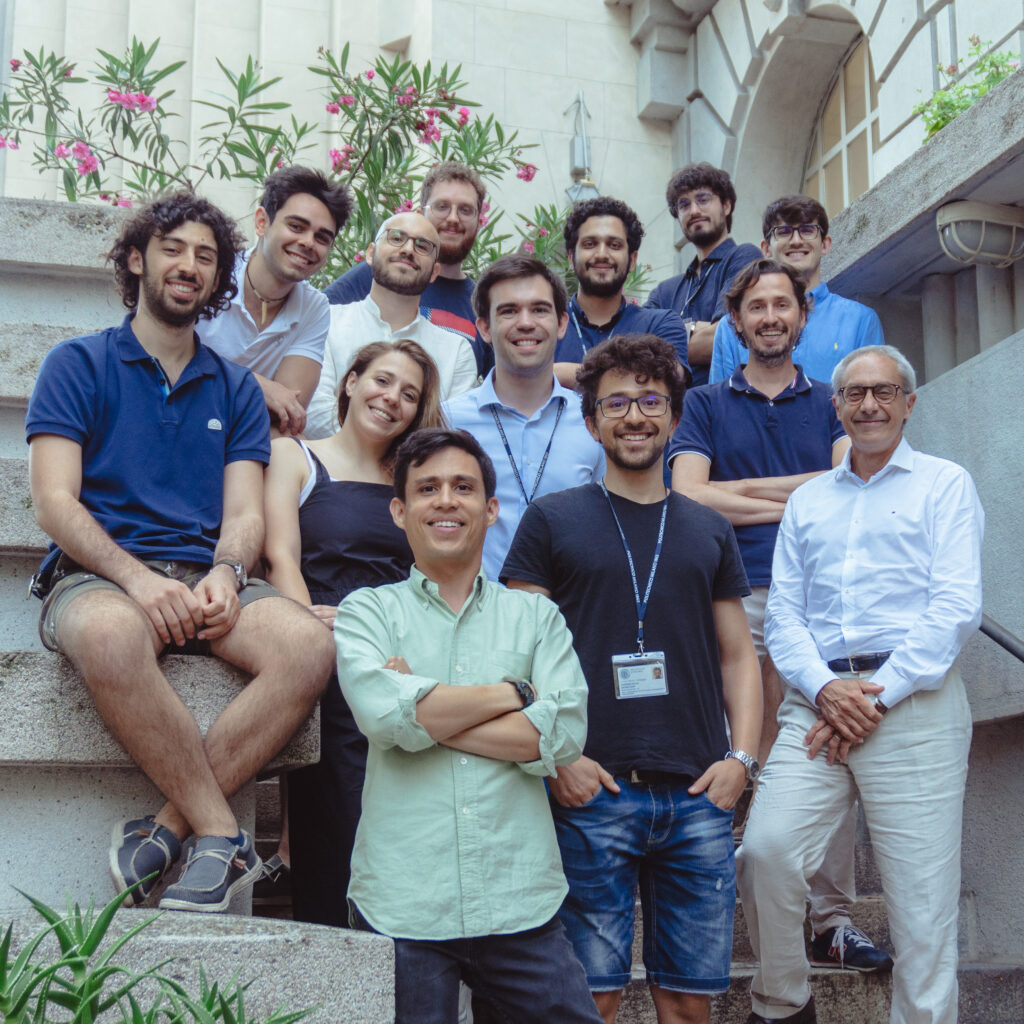Can you imagine a future where data no longer travels over fibre optic cables and light can be used wirelessly due to new photonic chips?
Andrés Martínez, who has always been intrigued by the potential of light, is already doing this. He is currently in the second year of his PhD in telecommunications and is doing research with the Photonic Devices Group on photonic integrated circuits for FSO applications, optical communication systems and unconventional technologies to transmit, monitor and control optical signals.
In this interview, he talks with us about the chips and telecommunications of the future.

Good morning Andrés. You work at PoliFAB, the micro and nanofabrication centre at the Politecnico. What exactly do you do?
Here at PoliFAB, we develop processes to manufacture different types of devices. In particular, I am part of the integrated optics group, where we develop photonic chips. I am basically involved in designing, characterising and testing these chips. Manufacturing, on the other hand, is handled by the PoliFAB technicians.
What is a photonic chip? How does it work?
We can think of it as a normal chip, similar to those in our computers, smartphones, smartwatches … but while these rely on electrical signals to process information, photonic chips use light to make calculations.
What are the benefits?
The most peculiar feature is that nothing can travel faster than light. So if we have a chip that processes information or transmits it using light, there is nothing faster than that chip. This is a great advantage.
Another advantage is that these chips do not consume power. Basically, they do not get hot, unlike conventional devices that can overheat and stop working during prolonged use. This does not happen with photonic chips because light does not dissipate energy.
With respect to energy consumption, photonic chips are an important alternative, and more so now with the focus on sustainability.
Photonic chips can be programmed. In what sense?
This means that we can make light do ‘whatever we want’.
Essentially, these chips contain light ‘roads’. By guiding light along different paths, we can choose which operations to perform. For example, I can configure the chip to do a sum or division just by changing the path of light.

What are the benefits for end users?
End users will see a single interface that can be programmed like a computer.
If these chips were not programmable, every application would require a separate chip. This is not very practical or efficient, because we would have to learn how to use each individual chip for each individual application.
Because they are programmable, we can have universal chips to do different tasks using a simple interface, like with our mobile phones.
Your research group has just completed important work on fast and secure telecommunications in harsh atmospheric environments. What have you developed?
The idea emerged from the need for communication in places that fibre optic cables cannot reach, such as remote areas or between the Earth and satellites. We want to use light for wireless transmission, just like we do with our mobile phones.
Today, we all have fibre optic cables that reach our homes and connect to a modem. The next step is to transmit data wirelessly, directly with light, without the need for fibre optics.
This is what we call free space optics: transmitting light without any medium other than air. This is essentially what happens today with smartphone data transmission.
What are the challenges associated with this technology?

Light is susceptible to atmospheric changes, such as rain, dust, pollution, changes in temperature, pressure, humidity, or the wind. All of these can impair transmission.
Because of this, we have developed a programmable photonic chip that can reconstruct information, even when it is destroyed by atmospheric turbulence between the time the signal is emitted and the time it is received.
In this specific case, the transmitted signal is what we call an encrypted signal with chaos.
The name is suggestive. Can you explain what it means?
‘Encryption’ generally means ‘hiding’ a message in some way, so that if a person or entity that is not the recipient of my message manages to get my signal, they cannot get the information.
Chaos is a technique used to hide the message. If we imagine transmitting an image, what we do is randomly rearrange each pixel in the image so that when it is transmitted between the sender and the receiver, only a jumbled jigsaw puzzle is revealed. The end user, on the other hand, will be able to rearrange all the pixels in the image to recreate the original image.
This is basically the concept of chaos that we apply: anyone ‘in the middle’ only sees noise!
What are the advantages of these programmable photonic chips?
The most immediate advantage is communication security, which is crucial in the military for transmitting sensitive data and for everything that needs to be transmitted with a high degree of security.
Another advantage is, of course, the possibility of communication in places around the world that cannot be reached with fibre optics for some reason.
In the future, we could use these devices for communication between the Earth and satellites and between satellites using light rather than radio frequency signals.
In your opinion, what is the next challenge in this field?
For the moment, we have only developed a receiver. We have a transmitting device and we use our chip to obtain all the information.
The next step is to also have a programmable photonic chip on the transmitter side. In this way, I can have two photonic chips communicating with each other quickly and safely, even in hostile environments, such as when there is a lot of rain, snow or other adverse weather events.
How could this impact everyday applications?
Since these chips are small, we can think about integrating them into mobile devices. We can also begin to think that one day we may have a cellular network that is no longer based on radio frequency signals, but on optical signals. Even Wi-Fi, for example, would work with light.
However, we have to recognise that radio frequency signals have certain advantages and optical signals have others. By integrating them, we could be connected everywhere 100% of the time.
What would you recommend to students who would like to follow your path in this field?
At the moment, the labour market is very receptive in the telecommunications sector. Companies are looking for telecommunications engineers, especially on the hardware side.
In fact, those of us in the Photonic Devices Group are developing research projects together with both Italian and international companies geared towards obtaining a final product.

